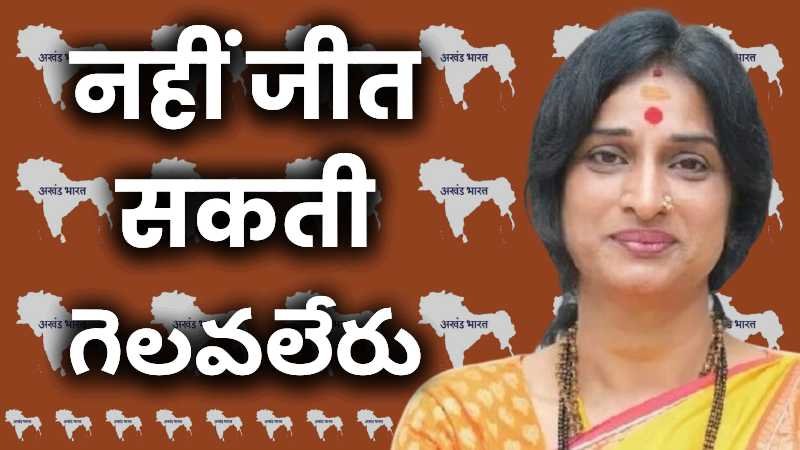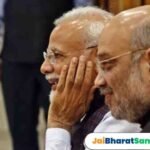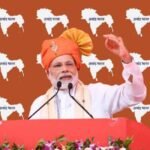In the electoral landscape of Hyderabad, the parliamentary constituency emerges as a battleground marked by complex demographics and intricate political dynamics. As the electoral juggernaut gains momentum, the analysis of voting patterns, community alignments, and candidate strategies unveils a compelling narrative.
BJP Cannot Win Against Asaduddin Owaisi – Chances Dim for Madhvi Lata

The Dominance of Asaduddin Owaisi:
At the heart of Hyderabad’s political theatre stands Asaduddin Owaisi, a formidable figure whose influence resonates deeply within the Muslim community. With approximately 59% of the electorate being Muslim, Owaisi commands a significant voting bloc that has historically remained loyal to his party, the All India Majlis-e-Ittehad-ul-Muslimeen (AIMIM). The unity and coherence exhibited by Muslim voters consolidate Owaisi’s stronghold over the constituency, making it a daunting challenge for any opposition contender.
The BJP’s Dilemma:
In contrast, Madhvi Lata, representing the Bharatiya Janata Party (BJP), faces an uphill battle in Hyderabad. Despite BJP’s efforts to rally support among Hindu voters, the absence of a cohesive Hindu vote bank proves to be a stumbling block. Hyderabad’s Hindu electorate appears fragmented and lacks the unified front necessary to tilt the electoral scales in favor of Lata. The failure to galvanize active support from the Hindu community underscores the BJP’s predicament in this diverse and polarized constituency.
Demographic Divides:
Hyderabad’s demographic composition further complicates the electoral calculus. While Scheduled Caste (SC) and Scheduled Tribe (ST) voters form a smaller percentage of the electorate, their significance cannot be discounted. However, their numbers pale in comparison to the Muslim population, which holds the decisive sway in determining the electoral outcome. Moreover, the constituency’s urban character underscores the importance of addressing issues pertinent to urban voters, adding another layer of complexity to the electoral narrative.
The Challenge of Voter Turnout:
Despite the palpable stakes, voter turnout in Hyderabad remains a cause for concern. The sub-50% turnout in both parliamentary and assembly elections reflects a disengagement or disillusionment among sections of the electorate. Mobilizing voters and revitalizing civic participation emerge as critical imperatives for all political stakeholders striving to shape Hyderabad’s political landscape.
Conclusion:
As the electoral saga unfolds in Hyderabad, Madhvi Lata’s prospects appear dim in the face of Asaduddin Owaisi’s entrenched dominance and the challenges posed by demographic realities. The BJP’s inability to consolidate Hindu support underscores the intricate interplay of identity politics and community dynamics shaping electoral outcomes. In this crucible of competing interests and divergent narratives, the road to victory for Lata seems fraught with obstacles, highlighting the enduring complexities of Indian electoral democracy
Why Madhvi Lata Cannot Win For BJP?
- Fragmented Hindu Vote: Despite being the candidate of the Bharatiya Janata Party (BJP), Madhvi Lata faces a significant challenge in consolidating Hindu votes in her favor. The Hindu electorate in Hyderabad appears fragmented, lacking the cohesive unity necessary to sway the electoral outcome decisively. This fragmentation dilutes the potential impact of Hindu voters and undermines Lata’s chances of securing a substantial mandate.
- Lack of Active Support: While the BJP may have a presence in Hyderabad, the party’s inability to mobilize active support from the Hindu community further weakens Madhvi Lata’s electoral prospects. Unlike the unified Muslim vote bank that rallies behind Asaduddin Owaisi, the Hindu electorate exhibits apathy or ambivalence, failing to coalesce around Lata’s candidacy with the same fervor and commitment.
- Identity Politics and Community Dynamics: The political landscape in Hyderabad is deeply entrenched in identity politics and community dynamics. As a result, the success of electoral candidates often hinges on their ability to resonate with specific demographic groups and cultivate strong community affiliations. In this context, Madhvi Lata’s inability to forge robust connections within the Hindu community leaves her at a distinct disadvantage vis-à-vis Asaduddin Owaisi, who commands unwavering support from the Muslim electorate.
- Owaisi’s Stronghold: Asaduddin Owaisi’s longstanding dominance over Hyderabad’s political landscape presents a formidable barrier to Madhvi Lata’s electoral aspirations. With Owaisi enjoying widespread popularity and trust among Muslim voters, coupled with the numerical advantage of the Muslim electorate, challenging his incumbency becomes a Herculean task for any opposition candidate, including Lata.
- Historical Precedents: Past electoral trends and outcomes in Hyderabad further underscore the challenges faced by Madhvi Lata and the BJP. The consistent electoral success of Asaduddin Owaisi and the AIMIM, coupled with the enduring fragmentation of the Hindu vote, reaffirm the entrenched nature of Hyderabad’s political dynamics, leaving little room for optimism regarding Lata’s electoral prospects.









